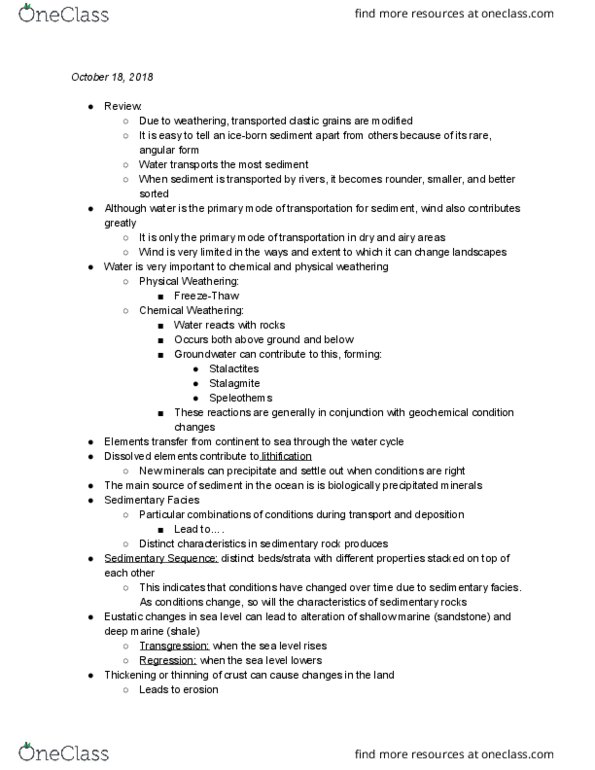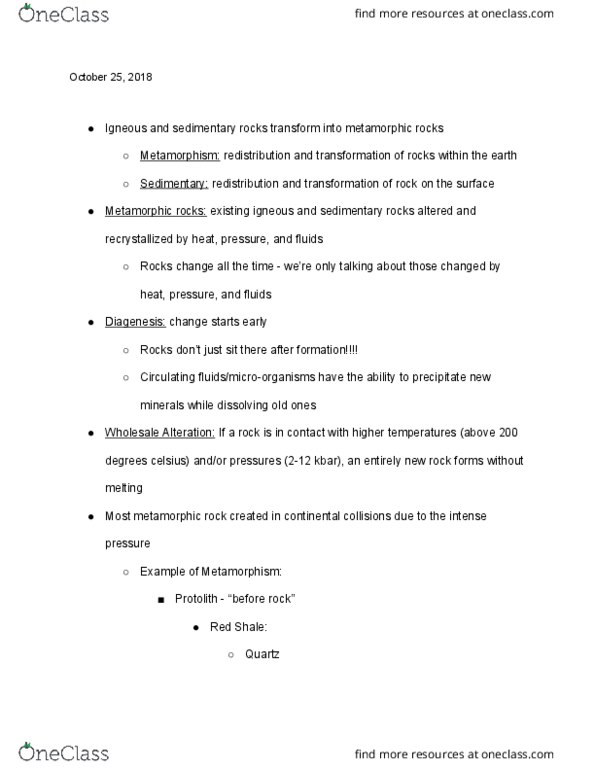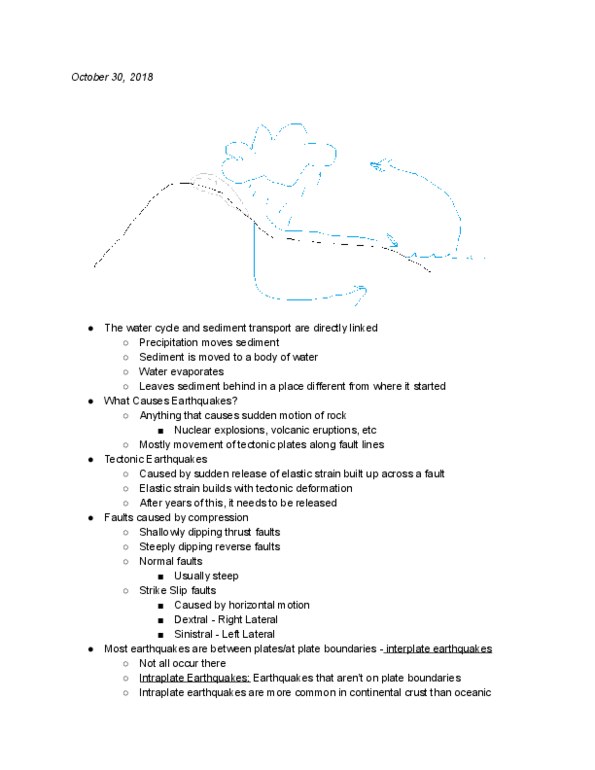GEOL 11040 Lecture 19: How the Earth Works 10/25/18
GEOL 11040 verified notes
19/31View all
Document Summary
Igneous and sedimentary rocks transform into metamorphic rocks. Metamorphism: redistribution and transformation of rocks within the earth. Sedimentary: redistribution and transformation of rock on the surface. Metamorphic rocks: existing igneous and sedimentary rocks altered and recrystallized by heat, pressure, and fluids. Rocks change all the time - we"re only talking about those changed by heat, pressure, and fluids. Rocks don"t just sit there after formation!!! Circulating fluids/micro-organisms have the ability to precipitate new minerals while dissolving old ones. Wholesale alteration: if a rock is in contact with higher temperatures (above 200 degrees celsius) and/or pressures (2-12 kbar), an entirely new rock forms without melting. Most metamorphic rock created in continental collisions due to the intense pressure. Neocrystallization: new minerals result from a change in the composition and lattice of the original mineral due to heat and pressure. Protolith minerals become unstable and undergo chemical reactions that change the assemblage of the minerals.




